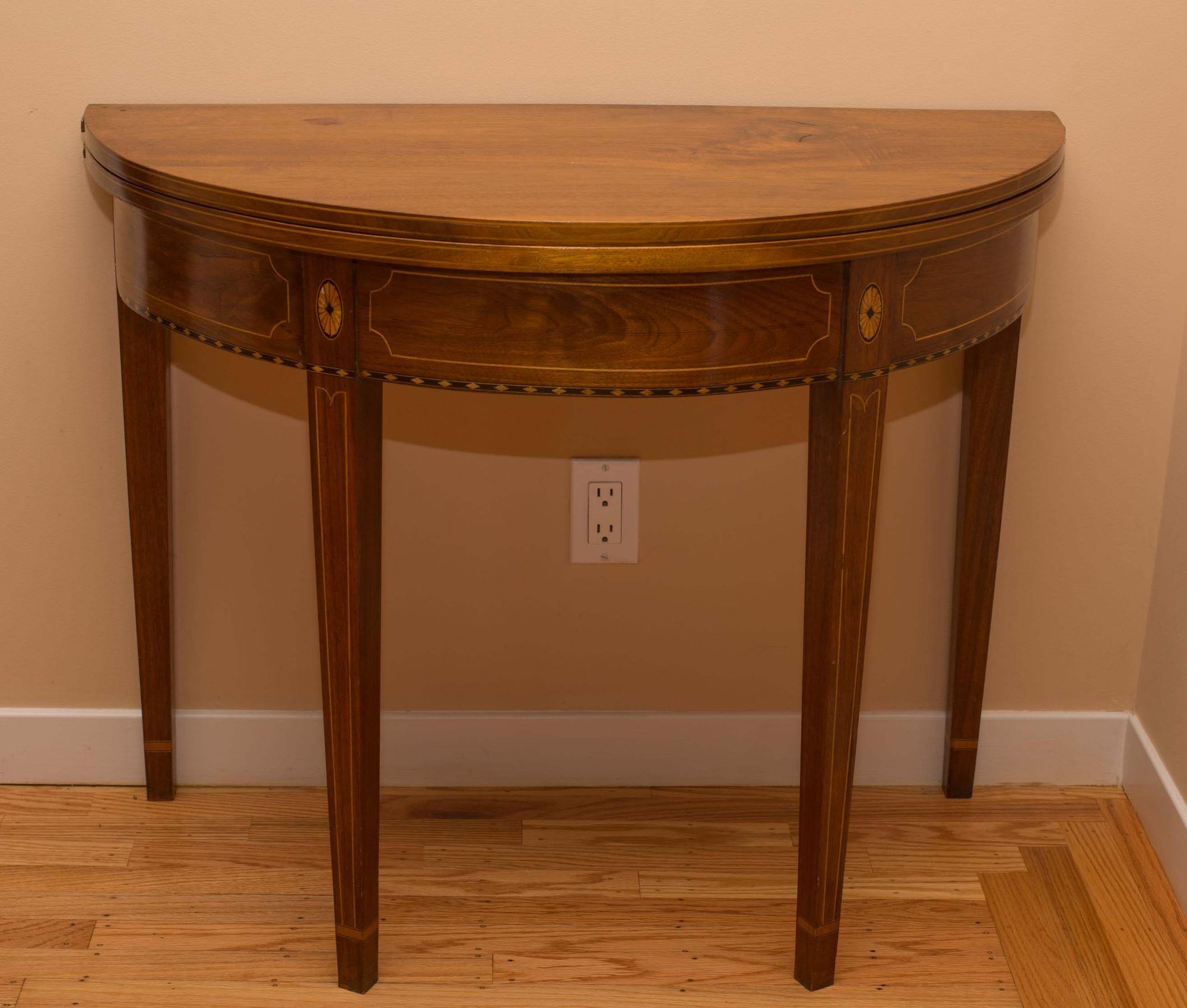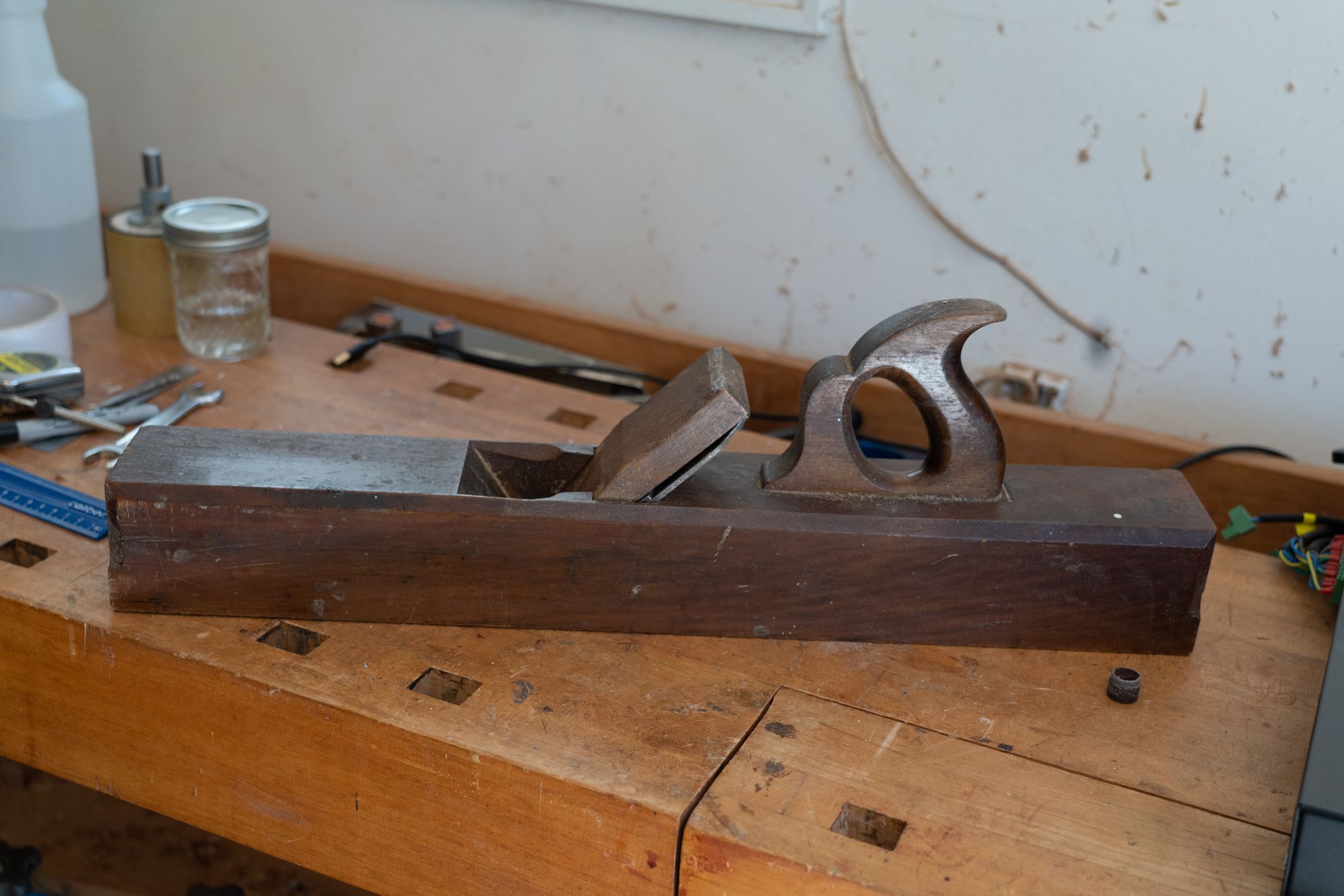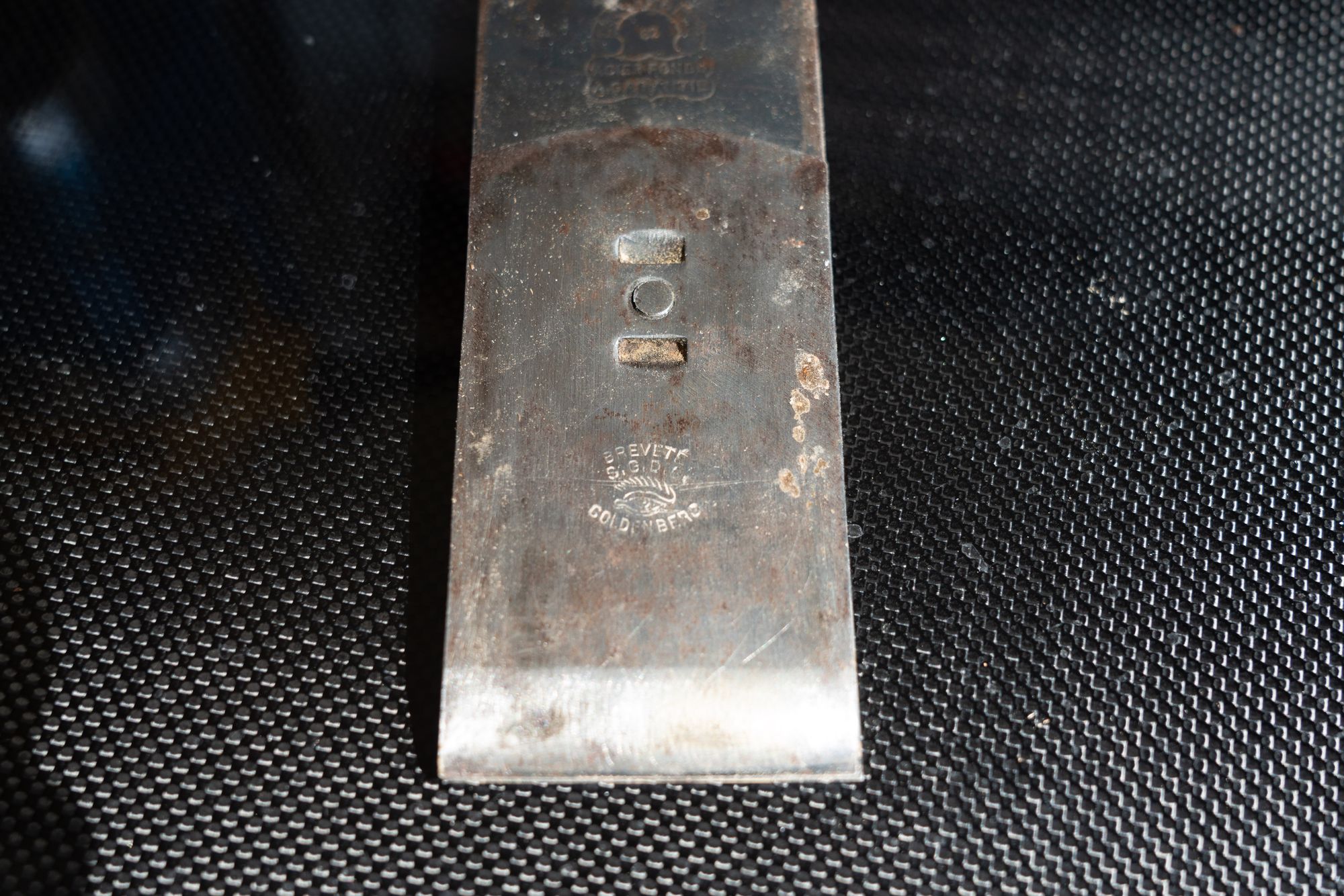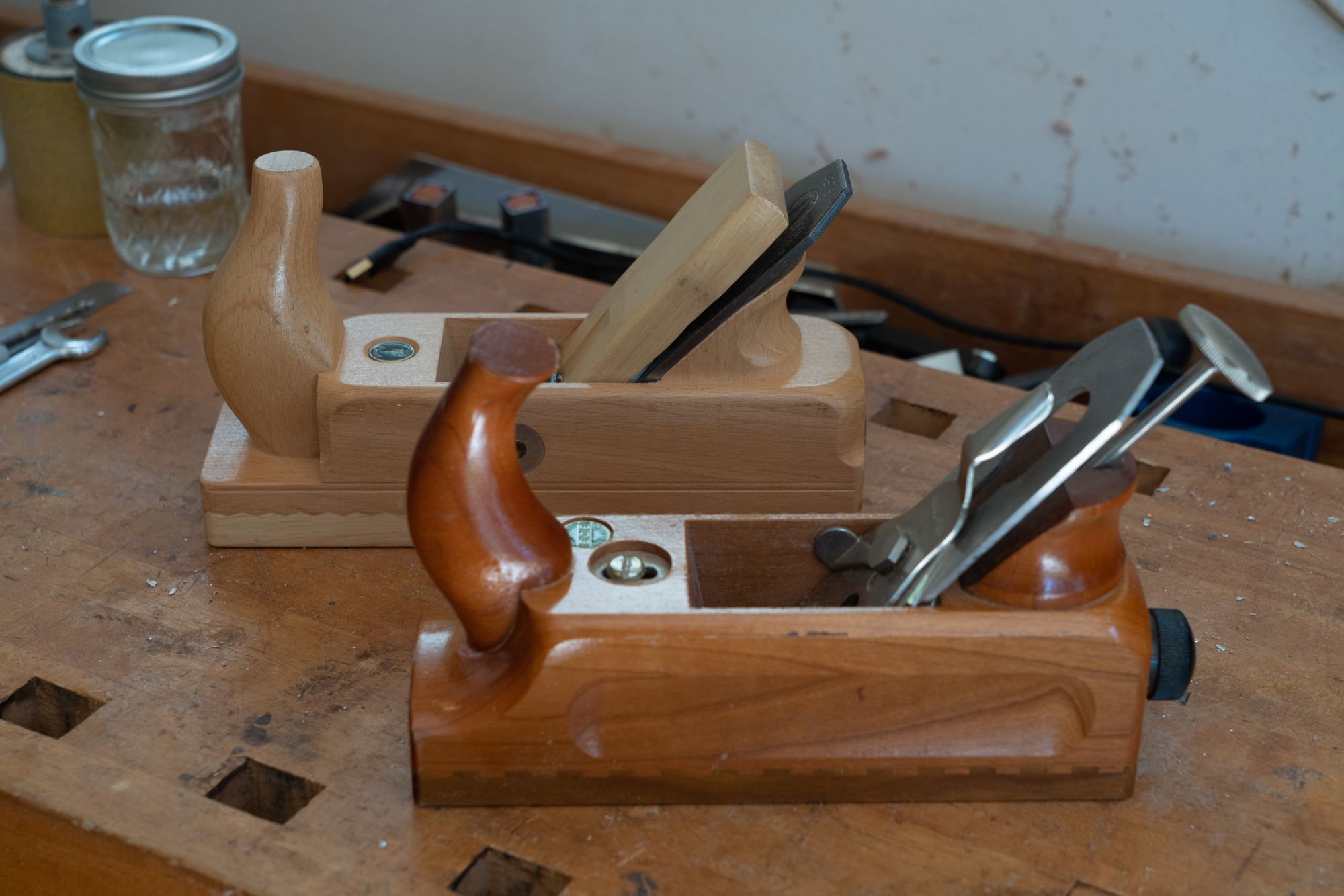
Building Furniture
As you may have figured out by now, I like to build physical objects. My day job has always involved creating intangible things—books, articles, teaching, lecturing—and it is very satisfying to create objects that you can touch, sit on, and use in daily life. I built the beds my kids slept on while growing up, and the kitchen table we still use every day. Over the past four years I’ve been building a set of six Windsor chairs based on the furniture maker Thos. Moser’s Bowback design, and recently completed the last one (pictured above).
This all started in the 1980s when I first worked for the State Department. The Secretary’s ceremonial suite of offices on the 8th floor is furnished with beautiful colonial-era antiques, which I admired as I periodically passed through. The Federal style was an American derivative of the English Sheraton and Hepplewhite designs. Even reproductions of this kind of furniture were beyond what I could afford, so I began to teach myself how to make this federal-style furniture.
___STEADY_PAYWALL___

I know that building furniture and woodworking in general is not what anyone would consider a high-tech hobby. In many other domains like photography, audio, computer gaming, automobiles, indeed, even cooking, there have been stunning technological advances from year to year, indeed from month to month. Not so with woodworking: The tools that a contemporary woodworker uses are basically the same that a great grandparent would have used in the 1940s or 50s. Reading a magazine like Taunton Press’ glossy Fine Woodworking gets tedious after a few issues because they run out of new topics to discuss, and recycle the same article on how to hand-cut dovetails or apply French polish. Indeed, there is a distinctly nostalgic if not reactionary trend among woodworkers to use old hand tools like planes and spokeshaves only, and dispense entirely with power tools.
This nostalgia is not hard to understand; it is related to the reason vinyl records and film have undergone revivals. When I was living in Santa Monica in the 1980s, there was an old guy who had a store that sold antique tools. I purchased several hand planes from him, including a jointer plane used to flatten the edges of long boards.

When I cleaned up the rusted blade, I found that it was made by Goldenberg, a company that existed in Alsace prior to the Franco-Prussian War. The plane was therefore over 150 years old. Once I sharpened the blade, it worked beautifully; despite its age, its sole was dead flat and cut beautifully.

When you re-connect with ancient technologies, you begin to relate to people of earlier ages, and understand the cultural conditions in which they lived. Take for example Japanese hand tools. There is a very strong Japanese tradition of carpentry and joinery. Japanese saws, planes, and chisels are like their Western counterparts in many respects, but they all cut on the pull stroke rather than the push stroke. What really sets them apart however are the blades. Japanese edge tools build on the tradition of sword makers who supplied Samurai warriors in feudal Japan. The legendary Japanese katana is built up out thin layers of steel hammered into a single blade, with harder steel in the middle to hold the edge, and softer steel at the sides to give the sword greater structural strength.
My paternal grandfather, Keiichi Fukuyama, immigrated to the United States in 1905 in order to avoid being drafted into the Imperial Japanese army to fight in the Russo-Japanese War. He opened a hardware store—"Fukuyama Hardware”—on First and San Pedro street in Los Angeles’ Little Tokyo neighborhood, where my father and uncle worked while they were growing up. This is why I think that a love of tools and hardware stores is encoded somewhere in my DNA.
The Fukuyama family struggled like everyone else during the Great Depression. But it turned out that my grandfather had secretly being using the family’s money to amass a collection of katanas. He himself came from a farming family, not a Samurai one, so owning the swords must have been a big status symbol for him. (My mother, who grew up in Japan and did come from a Samurai family, saw their swords confiscated during the American occupation.) My grandfather’s collection was lost, except for a single sword that has come down to me.
Knowing how to sharpen blades was one of those acquired skills that took me a long time to learn. I had bought a number of high-quality planes when I began my woodworking efforts back when we lived in McLean, Virginia—in particular, an ECE Primus smoothing plane with a beautiful body made of a hardwood called hornbeam, and another Ulmia smoother that had no mechanical adjustment mechanism. On the latter type of plane, as with the Japanese planes, the blade depth has to be set by tapping the back of the plane with a small hammer.

For the first 20 years of my woodworking career, I could never get the hang of planing. The plane would chatter, then dig itself into the wood, leaving marks that I would have to sand out. It wasn’t until years later that I figured out the entire problem lay in sharpening: I simply hadn’t gotten my blades sufficiently sharp for them to cut smoothly. You know it’s sharp enough when you can pull a piece of paper across it that falls in two piece with no effort.
Sharpening, it turns out, is a separate skill unto itself. Again, the Japanese have the best set of tools for this in the form of waterstones of varying grades. These must be soaked in water, and when used properly will produce a mirror finish on a piece of steel. Once I got the honing technique down, it turned out that planing was a huge joy—I could slide a paper-thin shaving off a piece of wood that was as long as the board itself.
That Alsatian plane I had acquired turned out to be one of my most useful tools. In cabinetmaking, if you need to create a wide surface for a tabletop, you need to “joint” several narrow boards together and glue them edge to edge. The edges need to be absolutely flat and true, otherwise there will be gaps or cracks between them. I used to own a big, heavy stationary jointer that must have weighed close more than 100 pounds. I sold all of my big power tools at one point, and didn’t have enough room in my new California shop to house one. So I used the 150 year-old jointer plane instead, and found that it was more efficient in creating flat surfaces than the power tool had been. So there’s a case where moving from 19th to 20th century technology didn’t buy us all that much advantage.
American Purpose newsletters
Sign up to get our essays and updates—you pick which ones—right in your inbox.
Subscribe






